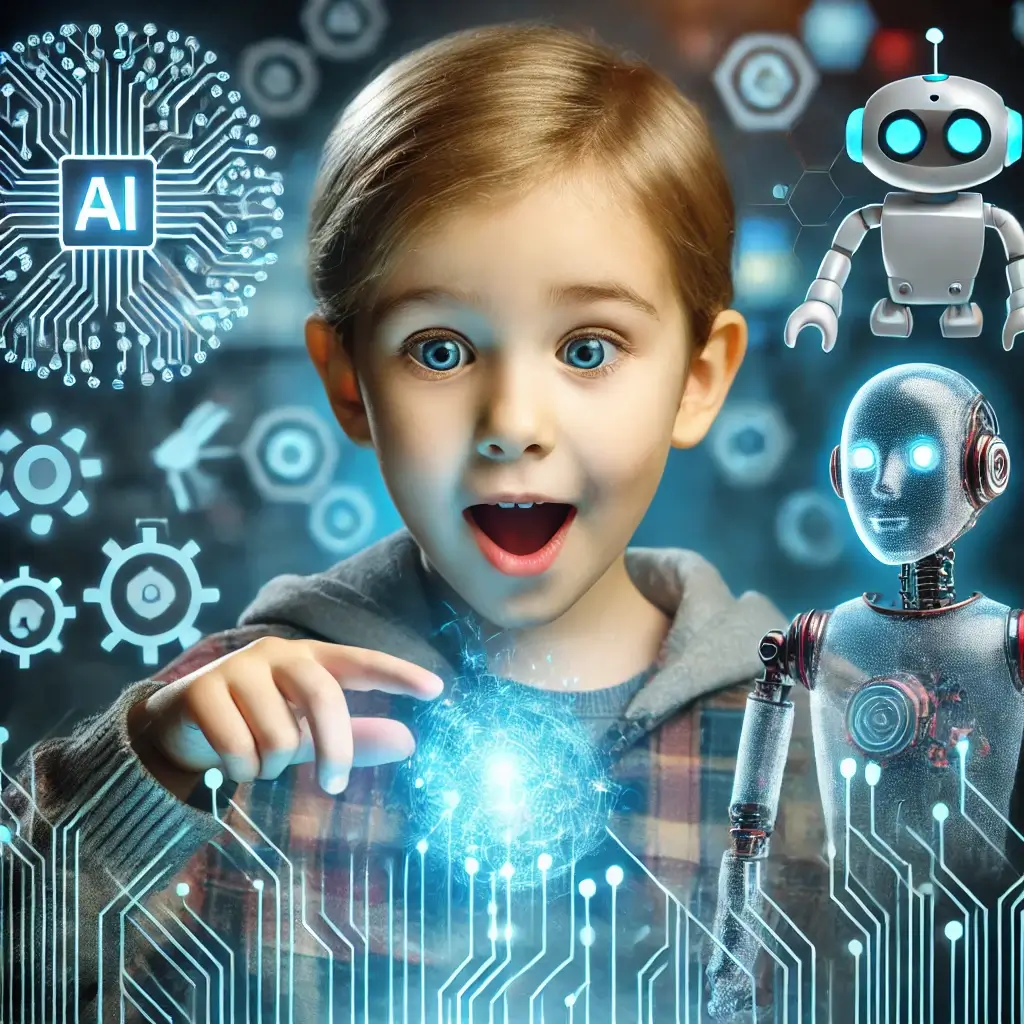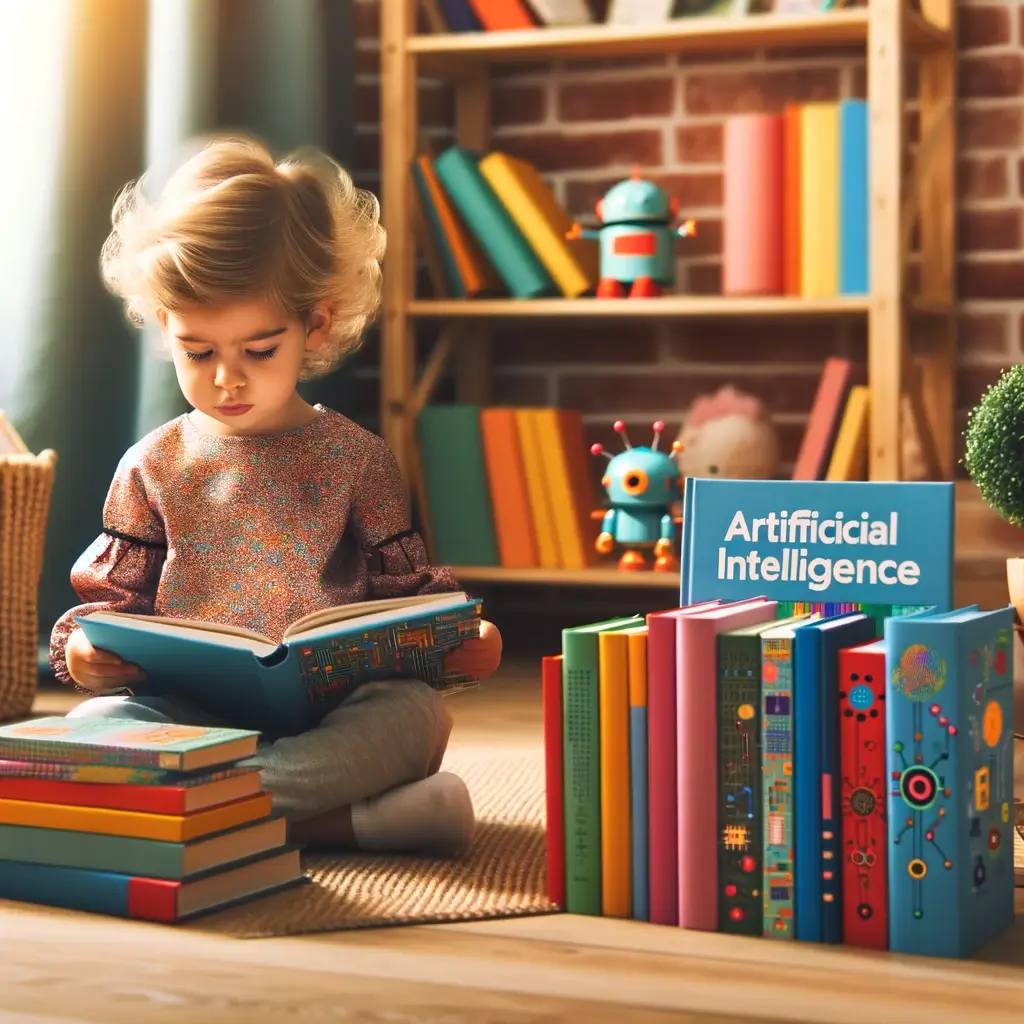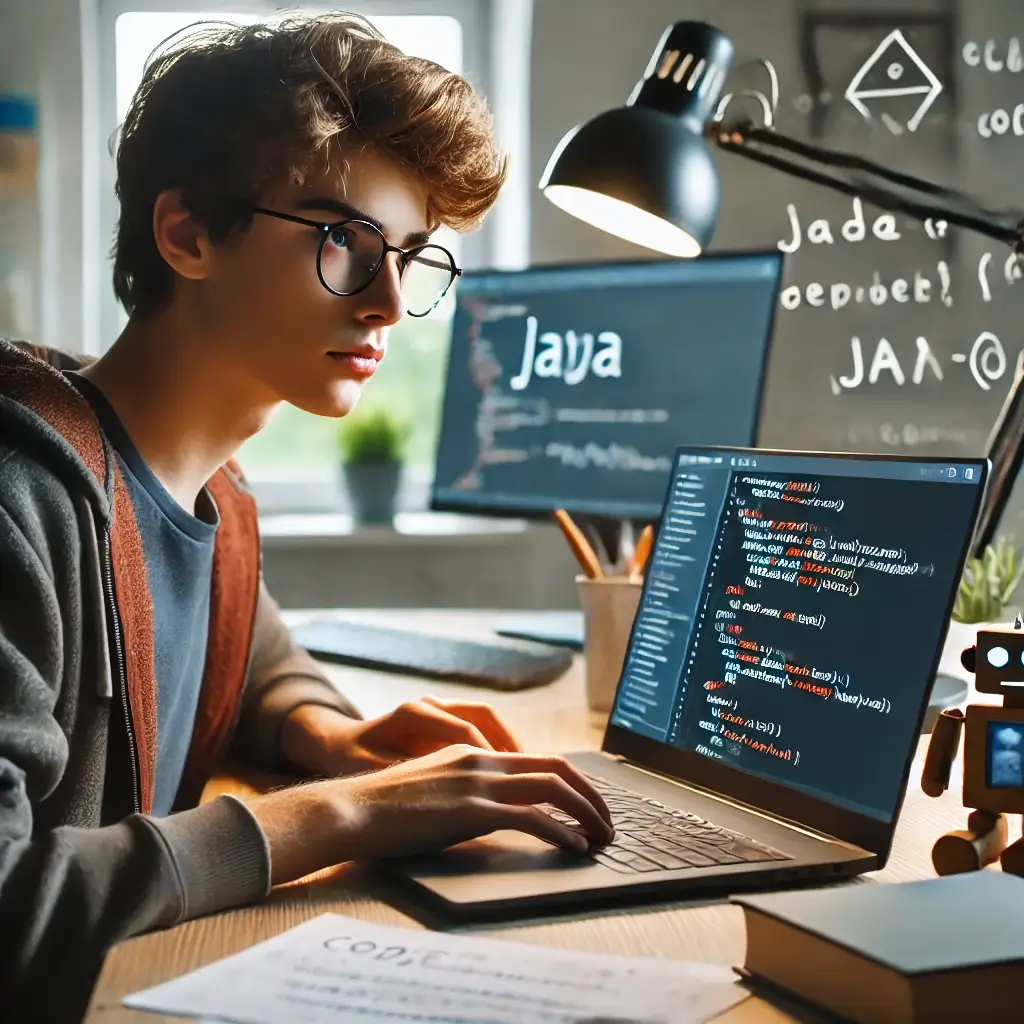Introduction
Imagine your child building their own AI-powered robot, programming it to navigate a maze, or even creating a simple chatbot to converse with friends. It sounds like the stuff of science fiction, but the future is here, and Artificial Intelligence (AI) is playing an ever-growing role in our daily lives. Introducing AI to kids not only prepares them for a technology-driven world but also enhances their problem-solving and critical thinking skills.
In this comprehensive guide, we explore the best resources to introduce AI to children. From engaging books on AI for kids to interactive AI games, safe character AI platforms, educational robots, and beginner-friendly programming tutorials like hands-on artificial intelligence with Java for beginners, we’ve got you covered. Whether you’re a parent, educator, or simply curious, this guide will help you navigate the exciting world of AI for kids.
Looking for a step-by-step approach to teaching AI? Check out our AI learning roadmap for beginners—perfect for kids and curious adults alike
Why AI for Kids? The Growing Importance of Early AI Education

Understanding the AI Boom for Young Learners
Artificial Intelligence is no longer a distant concept reserved for tech experts and sci-fi enthusiasts. It’s in our smartphones, powering voice assistants like Siri and Alexa, and in our homes through smart devices. As AI becomes increasingly integrated into everyday life, understanding its fundamentals becomes essential—even for kids.
Introducing AI concepts early on can demystify technology and inspire children to become creators rather than just consumers. It opens doors to innovative thinking and equips them with skills that are highly valued in the modern world.
Skills Kids Can Gain from AI
- Computational Thinking: Learning to break down complex problems into manageable parts.
- Logical Reasoning: Understanding cause and effect within algorithms and systems.
- Creativity: Encouraging out-of-the-box thinking to develop unique solutions.
- Digital Literacy: Building a strong foundation in understanding and using technology responsibly.
- Collaboration: Working together on projects fosters teamwork and communication skills.
By embracing AI education, kids not only acquire technical skills but also develop a mindset geared towards innovation and lifelong learning.
Books on AI for Kids – Engaging Reads for Young Minds

Top Book Recommendations
1. “Hello Ruby: Adventures in Coding” by Linda Liukas
A delightful storybook that introduces young readers to the world of coding and computational thinking through the adventures of a little girl named Ruby. While not exclusively about AI, it lays the groundwork for understanding how technology works.
2. “Artificial Intelligence for Kids: An Introduction” by Rajiv Chopra
This book simplifies complex AI concepts like machine learning, neural networks, and robotics. It’s filled with illustrations and examples that make learning about AI accessible and fun for kids aged 8 and up.
3. “Machine Learning for Kids: A Project-Based Introduction to Artificial Intelligence” by Dale Lane
A hands-on guide that allows kids to build their own AI projects using Scratch and Python. It’s perfect for children who are ready to dive into practical applications of AI.
4. “AI Superpowers: China, Silicon Valley, and the New World Order” by Kai-Fu Lee
While geared towards older kids and teenagers, this book offers insightful perspectives on the global impact of AI, inspiring readers to think about the future of technology and their place in it.
Educational Impact of AI Books for Kids
Books on AI for kids serve as a bridge between complex technological concepts and young, curious minds. They often include:
- Interactive Activities: Engaging exercises that reinforce learning.
- Relatable Examples: Stories and analogies that make abstract ideas tangible.
- Progressive Learning: Concepts build upon each other, allowing kids to advance at their own pace.
By incorporating these books into their reading routine, children can develop a solid understanding of AI fundamentals in an enjoyable way.
Character AI Safe for Kids – Keeping Young Explorers Secure Online

The Need for Child-Friendly AI Platforms
As AI becomes more interactive, platforms featuring AI characters and chatbots are gaining popularity among children. While these can be excellent educational tools, it’s essential to ensure that they are safe and appropriate for young users.
Top Safe Character AI Platforms for Kids
**1. Google’s Read Along (Formerly Bolo)
An AI-driven app designed to help children improve their reading skills. The in-app reading buddy, Diya, listens to kids read aloud and offers real-time feedback and encouragement. It’s available offline, ensuring a safe environment free from online distractions.
**2. Amazon’s Alexa with Parental Controls
When configured with parental controls, Alexa can be a valuable educational tool. Kids can ask questions, play educational games, and listen to stories. The FreeTime feature allows parents to set time limits and filter content.
**3. Replika for Kids
A child-friendly version of the popular AI companion app, Replika for Kids engages children in conversations that promote emotional intelligence and social skills. All interactions are monitored to ensure safety and appropriateness.
Parental Controls and Safety Tips
- Enable Privacy Settings: Always activate parental controls on devices and apps.
- Monitor Usage: Keep an eye on how your child is using AI platforms.
- Educate Your Child: Teach them about the importance of not sharing personal information.
- Choose Reputable Apps: Stick to well-known platforms that prioritize safety.
By taking these steps, you can provide a secure environment for your child to explore AI technologies.
AI Games for Kids – Fun Ways to Build Skills Through Play

Benefits of AI-Driven Games in Learning
AI games are more than just entertainment; they’re powerful educational tools that adapt to a child’s learning pace. Benefits include:
- Personalized Learning: Games adjust difficulty based on the player’s skill level.
- Enhanced Engagement: Interactive gameplay keeps kids interested and motivated.
- Skill Development: Encourages strategic thinking, problem-solving, and adaptability.
Top AI Games for Kids
**1. Minecraft: Education Edition
This platform transforms the popular sandbox game into a learning environment. Kids can explore coding, chemistry, and even AI concepts by programming in-game agents using block-based coding.
**2. CodeCombat
An immersive game where kids write actual code to navigate their characters through challenges. Supports programming languages like Python, JavaScript, and more, making it an excellent tool for learning real coding skills.
**3. Lightbot
A puzzle game that introduces programming logic. Players guide a robot to light up tiles, teaching sequences, loops, and conditionals in a fun and accessible way.
Incorporating AI Games in Education
- Set Goals: Define what skills or concepts you want your child to learn.
- Discuss Outcomes: Talk about the strategies used and what was learned after gameplay.
- Encourage Creativity: Allow kids to modify or create levels to deepen their understanding.
By integrating AI games into learning, you make education interactive and enjoyable.
AI Robot for Kids – Hands-On Robotics and Coding Fun

Why Robots Are Perfect AI Tools for Kids
Robots provide a tangible experience that combines hardware and software. They help kids understand AI principles through physical interaction and visual feedback.
Best AI Robots for Kids
**1. Anki Cozmo
A small robot with a big personality. Cozmo can recognize faces, display emotions, and be programmed using a visual coding app. It’s designed to make AI and robotics accessible and entertaining.
**2. Sphero SPRK+
An app-enabled robotic ball that teaches coding through play. Using the Sphero Edu app, kids can program movements, change colors, and navigate mazes using block-based coding or JavaScript.
**3. LEGO Education SPIKE Prime
Combines LEGO building elements with programmable hardware. Kids can build robots and program them using a Scratch-based language, making complex concepts approachable.
Learning AI with Robotics
- Hands-On Engagement: Building and programming robots reinforces learning.
- Problem-Solving: Debugging code and troubleshooting hardware issues develop resilience and analytical skills.
- Collaborative Learning: Working in groups fosters teamwork and communication.
Robotics kits often come with lesson plans and challenges, guiding kids through progressively complex projects.
Want more interactive tools for young learners? Here are our top 5 free AI tools to get started with creativity and coding.
Hands-On Artificial Intelligence with Java for Beginners – Bridging the Gap to Advanced Learning

Introducing AI Programming with Java for Older Kids
For teenagers and advanced learners, diving into Java programming opens up a deeper understanding of AI. Java is a versatile language used in various applications, including AI development.
Best Resources and Tutorials for Kids Learning Java
**1. Codecademy’s Java Course
An interactive platform that teaches Java fundamentals through hands-on exercises and projects. Suitable for beginners, it provides instant feedback and progress tracking.
**2. “Hands-On Artificial Intelligence with Java for Beginners” by John Horton
This book guides readers through building AI applications using Java. It covers essential topics like data structures, algorithms, machine learning basics, and more.
**3. Greenfoot
An educational IDE (Integrated Development Environment) that makes learning Java fun. Kids can create games and simulations, visualizing concepts that would otherwise be abstract.
Project Ideas Using Java for AI
- Simple Chatbot: Create a program that can hold basic conversations using pre-defined responses.
- Tic-Tac-Toe with AI: Develop a game where the computer can play against the user with varying difficulty levels.
- Image Recognition App: Use Java libraries to build a simple application that can recognize and classify images.
Working on projects helps solidify programming concepts and demonstrates real-world applications of AI.
For teens looking to build real AI systems, try our Python-based AI tutorial that walks through every line of code.
Conclusion: Embracing the Future of AI for Kids
Artificial Intelligence is not just the future—it’s the present. By introducing AI to kids through engaging books, safe character AI platforms, interactive games, educational robots, and beginner-friendly programming tutorials like hands-on artificial intelligence with Java for beginners, we’re equipping them with the tools they need to succeed in a rapidly evolving world.
Encouraging children to explore AI nurtures their curiosity and creativity, preparing them to be the innovators and problem-solvers of tomorrow. Whether your child is interested in coding, robotics, or simply loves playing with technology, there’s an AI resource out there to inspire them.
Ready to embark on an AI adventure with your child? Dive into these resources and watch them discover the exciting world of artificial intelligence!
Interested in how AI is applied in the real world? Explore how AI is transforming education, finance, and healthcare.


1 thought on “The Ultimate Guide to AI for Kids: Books, Games, and Safe Learning Resources for Young Minds”